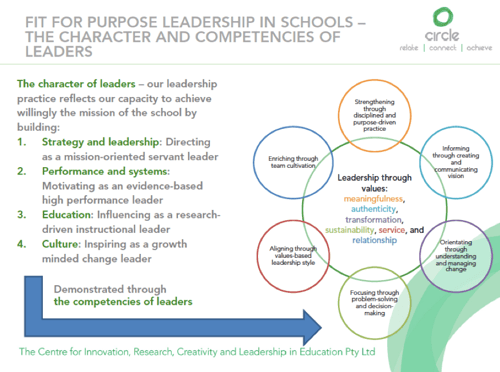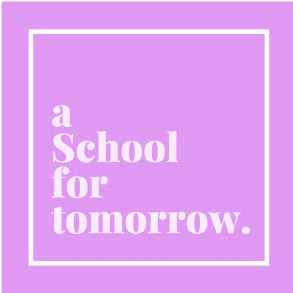Game Changers | Lead
The Journey of a Leader
A learning community that provides an authentic 21C education demands first and foremost the leadership of people, change, and culture. Our schools need both strategy and culture to align if they are to make the most of the opportunity presented by a school learning community to grow towards an authentic 21C educational product in a manner that is enhanced by sustainable and service-oriented processes of planned transformation. Schools that genuinely excel at their mission for achieving the right graduate outcomes benefit significantly from a leadership agency that is directed at the work of shaping culture. In particular, those leaders who are able to commence a journey to align the culture of their school and the people who act as stewards of it to the school’s desired and necessary trajectory for growth and renewal are the ones who have the greatest degree of success in ensuring that bad culture does not “eat strategy for breakfast”, to borrow from Peter Drucker’s oft-misunderstood phrase. A school leader’s activity in aligning culture with strategy must arise from an ongoing journey involving reflection and development of the purpose of leadership and it needs to flow through from an understanding of how best to articulate the values and mission of the school community into daily life. The competencies and capabilities of school leaders on this journey are definable and this “culture work” needs to be exercised at different levels to ensure that the school is fit for purpose.

We have drawn together all of our ongoing research into the character of an excellent 21C education and how leaders respond to this challenge to propose a Model of Fit for Purpose 21C Leadership in Schools:

This requires us to integrate what we believe (our Values), with who we are (our Character), and how we enact this on a daily basis (our Competencies). As with our thinking about the whole education of our students in character and competency, it is a holistic model. As I have written elsewhere, it invites us into a continuing “process of becoming better instructional leaders through the right processes for development of our capacity, that is, initial training, induction and continuing professional development, including mentoring and cluster professional development support structures.” (Philip SA Cummins, Autonomous schools in Australia: Not ‘if’ but ‘how’, CSE, 2012)
It also confronts us with ten essential leadership dispositions that characterise the experiences that inform this learning process:
- We are all still learning about leadership.
- Our intentions and execution most likely will both need to improve from here onwards.
- We will make mistakes along the way.
- Our leadership must be focused on doing the hard things.
- Our leadership must be focused on helping other people.
- Our leadership must help people change to become the people they need to be.
- Our leadership must be sustainable and achievable.
- Our leadership needs integrity – even though it’s hard and it makes us vulnerable.
- If we are not prepared to do this, we shouldn’t do the job.
- We should be prepared to do this – because most likely we can.
Of these dispositions, the one we see most consistently in those school leaders who overcome the most difficult of challenges in their communities is that related to vulnerability. Deeply connected to personal humility, it requires an openness to listen to and accept criticism that at times will be significantly hurtful and unfair to the individual leader, in a manner that perhaps reflects the rawness of the pain felt by the section of the community from which the sentiment originates. Only by sharing in the pain can the leader help the community move forward. This calls on an emotional reserve that speaks to the character of the leader, and the leader of character. This is the leader who community’s want to see. Not someone who is perfect, not someone who leads from on high, but one whose works reflects the humanity of the people who have entrusted the leader with the education of that which is most precious to them – their children.
A school leader’s activity in aligning culture with strategy must arise from an ongoing journey involving reflection and development of the purpose of leadership and it needs to flow through from an understanding of how best to articulate the values and mission of the school community into daily life.
Daily leadership practice commonly consist of learning how to draw on a combination of research, evidence, and the lived experience to find meaningful and practical answers to fundamental questions such as:
- How do I lead my friends?
- How do I balance collaboration with control?
- How do I find the time to lead?
- How do I help others find the time to do the work of growth and transformation?
- How can I build a narrative for change that helps people to grow?
- How can build a positive culture of constructive behaviours?
- How can I talk with other people successfully about sensitive issues or challenges?
- How can I break through with addressing destructive behaviours?
- How do I work through making decisions that can’t please everyone?
- How do I manage parental expectations?
- How do I inspire students to commit to their learning and work together effectively?
Developing answers to questions such as these is the work of many years. Sometimes these answers must change as the context for leadership changes and as the efficacy of solutions inevitable waxes and wanes. As we so often say, what works in one school will fail in the school down the road. Usually on the story of yesterday to today to tomorrow in a school, the combination of vision, intention, means, and culture will interact with each other differently. Complex educational environments will often place difficult, challenging and contradictory demands on leaders. We believe that long-term educational leadership success lies in clear purpose and direction, strong values, and organisational belief which enhance team flexibility and responsiveness to the needs of the community as they grow and change over time. Teams must be adaptable and possess many skills to meet challenges, including:
- Finding new and better ways of doing things
- Accepting greater levels of responsibility
- Understanding the implicit need for decision-making by making judgments, managing risk, and allowing freedom of action by team members
Fit for purpose 21C leaders must also measure what they and their school does. They understand that a great school evaluates its organisational maturity as a school of character by tracking and gathering evidence of school climate and culture, teacher and program effectiveness, strategic and operational alignment, and the professionalism of staff as the key components of a community of inquiry and practice dedicated to the attainment of its desired graduate outcomes based on 21C civic, performance, and moral character competencies. They also understand that without objective evaluation, any school can succumb to the weight of its own myths over time.






